THE PSYCHE OF 192 ST. JOHN’S PL. (1889)
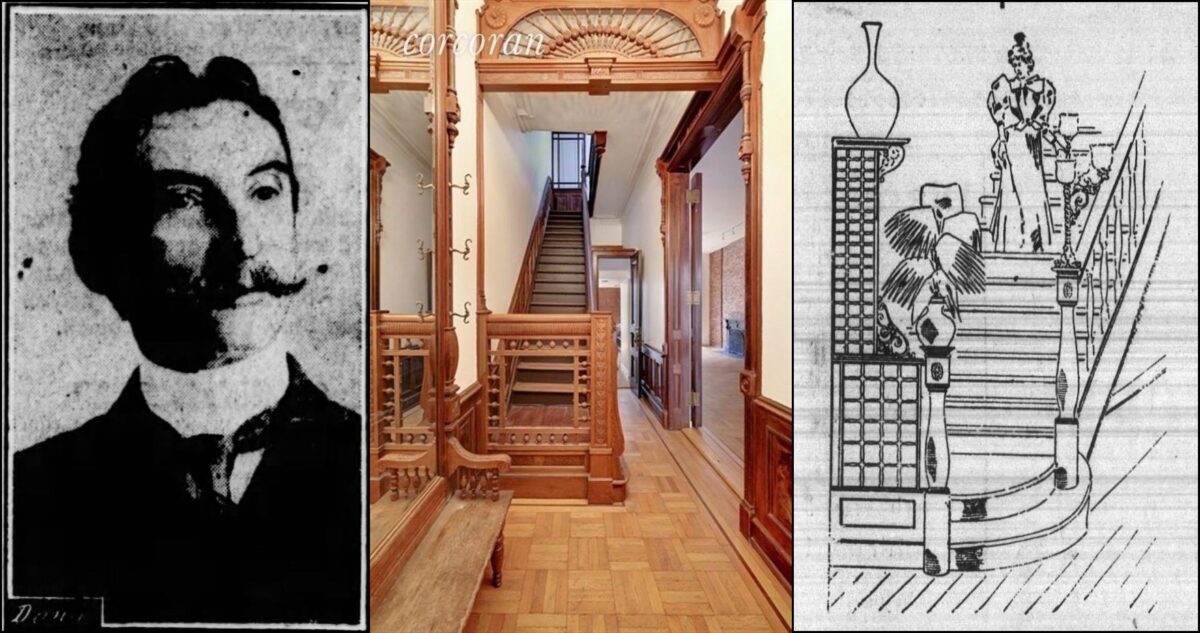
Brownstone Detectives investigates the history of our clients’ homes.
The story you are about to read was composed from research conducted in the course of one of those investigations.
Do you know the history of YOUR house?
********************************************************************************************************************************
Starting in the late 1880s, the Brooklyn Daily Eagle started a series of articles which described – in great length and detail – the interiors of individual newly-built or renovated houses. These houses were usually brownstones belonging to those affluent or upper-middle-class members of society.
Not only did such articles describing the interiors of neighbors’ homes sell newspapers, but the articles also served as advertising directed at those in the market for a townhouse who wanted a home of their own.
These advertisement-articles were placed, likely at the expense of the designers responsible for the “interior decorations” being described, as each piece often ended with what readers wanted to know:
“Who did the work?”
“THE WORK WAS DONE BY A. KORBER”
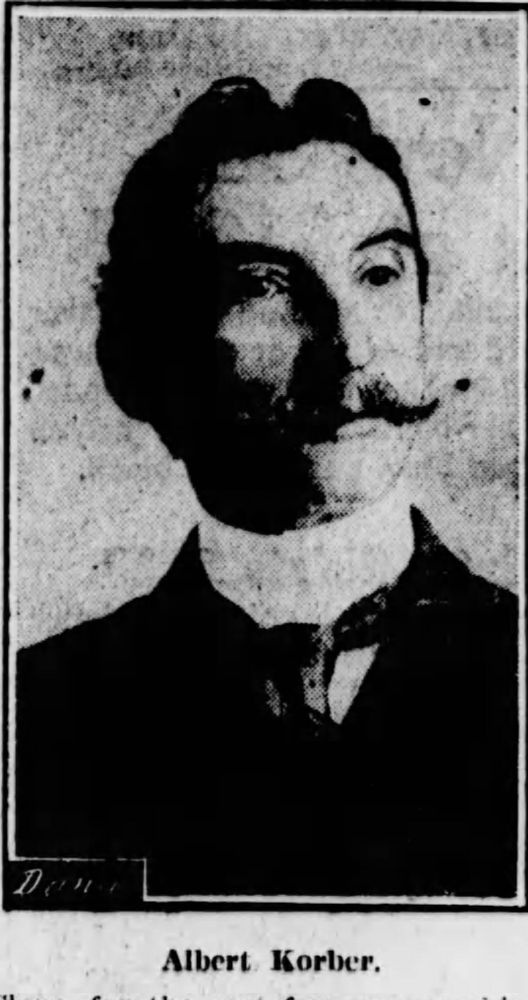
Albert Korber, who went by “A. Korber,” was an architect and designer who settled in Brooklyn at the age of 15. Three years later he “started business on Adams street as a manufacturer of picture frames and moldings. Several years later he founded the decorating business which bears his name, with showrooms on Montague street and a factory for the manufacture of interior woodwork and furniture in South Brooklyn.”
By 1889, Korber was 42, a successful decorator throughout the City of Brooklyn. Although he was held in high esteem for all of the work that his company did for homeowners, his calling card focused on a niche industry entirely of his own design – taking the finite space of a brownstone and increasing it (at least in appearance or perception). Korber’s specialty was taking the interior entrance of a house and re-imagining it as a new space entirely.
Thus, it became a grand “reception room.”
That year, Korber was working on a brownstone (that had been built within the last 5-10 years) belonging to Howard M. Baker, the owner of a shipping company, and a future incorporator of the New York and Porto Rico Steamship Company.
Korber’s work was described in intricate detail by the Brooklyn Daily Eagle:
“MAKE A RECEPTION ROOM OF YOUR HALL…”
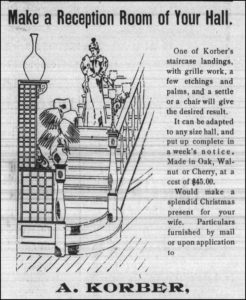
“The staircase is remodeled with platform, column, transom and handsome plush drapery,” began the Eagle. “The ascent is changed, thus forming a reception hall, independent of the main hall.”
The addition of a platform at the bottom of the stairwell, as well as a column, transom and drapery was a signature part of Korber’s design which incorporated these various elements in creating the impression that the space before the stairwell, the hall, as well as the stairwell itself, was a separate hall room, used for receiving guests.
“The reception hall is artistically treated in relief composition in subdued steel color, with repoussee antique medallions set irregularly,” continued the Eagle. “The side wall space is occupied by a handsome beveled mirror with hall settee.
“The main hall to the home is decorated with oil composition, with frieze, pilasters and picture rod moldings, the contrast of design and coloring giving apparent space and effect, so different from the usual manner of one continuous design and color. Beveled plate mirrors at the head of the first flight of stairs not only reflect light, but enhance the general effect by evening.”
THE PSYCHE IN THE PARLOR
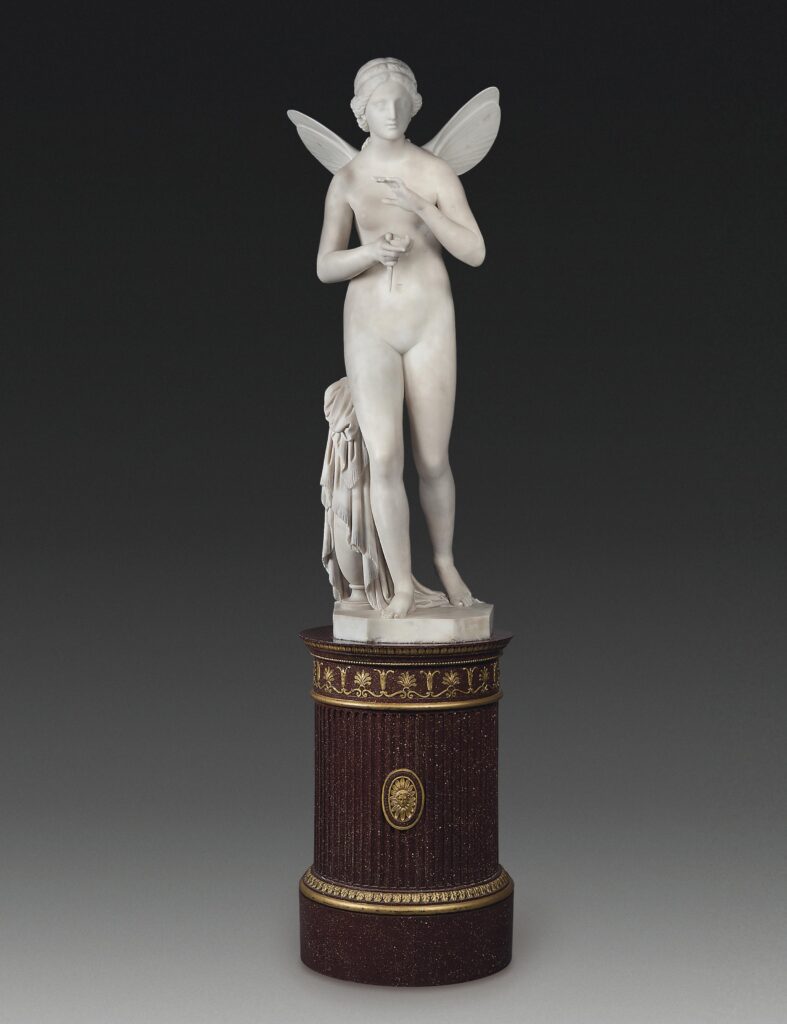
“The entrance to the parlor, 8 feet by 12, has carved and decorated transoms, with plush portieres of pale fawn color. The cornice and ceiling moldings have been removed, and a deep cove substituted, thus giving height and width to the room. The ground color of the side walls is a pale gray hue with flock relief of ivory tint. The cove is the ground color, as the side walls with the shading in ivory tint to the center of the ceiling. The cove and ceiling being one unbroken surface gives ample space for classic design in the French renaissance. The design is artistically carried out in soft tones in light and shade.
“A mirror from the cove to the floor with drapery and low pedestal supporting a figure of Psyche in Carrara marble, is directly opposite to the entrance of the parlor. The parlor carpet is of two shades of deep cream, with wide renaissance border.
“The partitions and doors leading to the back parlor have been taken out and richly carved, and turned open work and transoms in carved wood in bold design substituted. Connecting with the base of open work are two handsomely carved and paneled pedestals supporting two massive bronzes.”
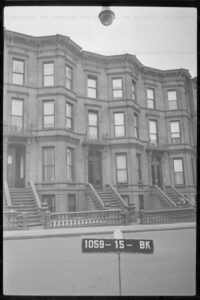
THE BACK PARLOR
“Richly embroidered portieres, looped back, lend a graceful outline tone of coloring for the back parlor, being in old rose. The design of the ceiling and cove is continuous, leaving a large oval apace. The inner part of the outer edge of oval is decorated with semi circles of gold (intersecting) colors, shading in a paler hue to the center of the ceilings. The side walls of flock are in two shades of old rose.”
THE SECOND & THIRD STORIES
“The second story front (alcove) is decorated in two shades of pale olive and gold in Louis XVI style, with the side walls to harmonize. The rear room is decorated in warm salmon tone, with the color radiating from the center of the ceiling. The passageway has new plumbing, with red African marble, furnished with antique cabinets with glass fronts and shelves. The bath room has new plumbing throughout, with parquet flooring and walls and ceiling tastefully decorated in oil composition.
“The third story is neatly tinted and papered.”
———————————————————————————————————————–
 Brownstone Detectives is an historic property research agency. Our mission is to document and save the histories of our clients’ homes. From our research, we produce our celebrated House History Books and House History Reports. Contact us today to begin discovering the history of your home.
Brownstone Detectives is an historic property research agency. Our mission is to document and save the histories of our clients’ homes. From our research, we produce our celebrated House History Books and House History Reports. Contact us today to begin discovering the history of your home.